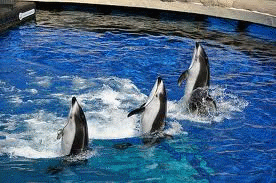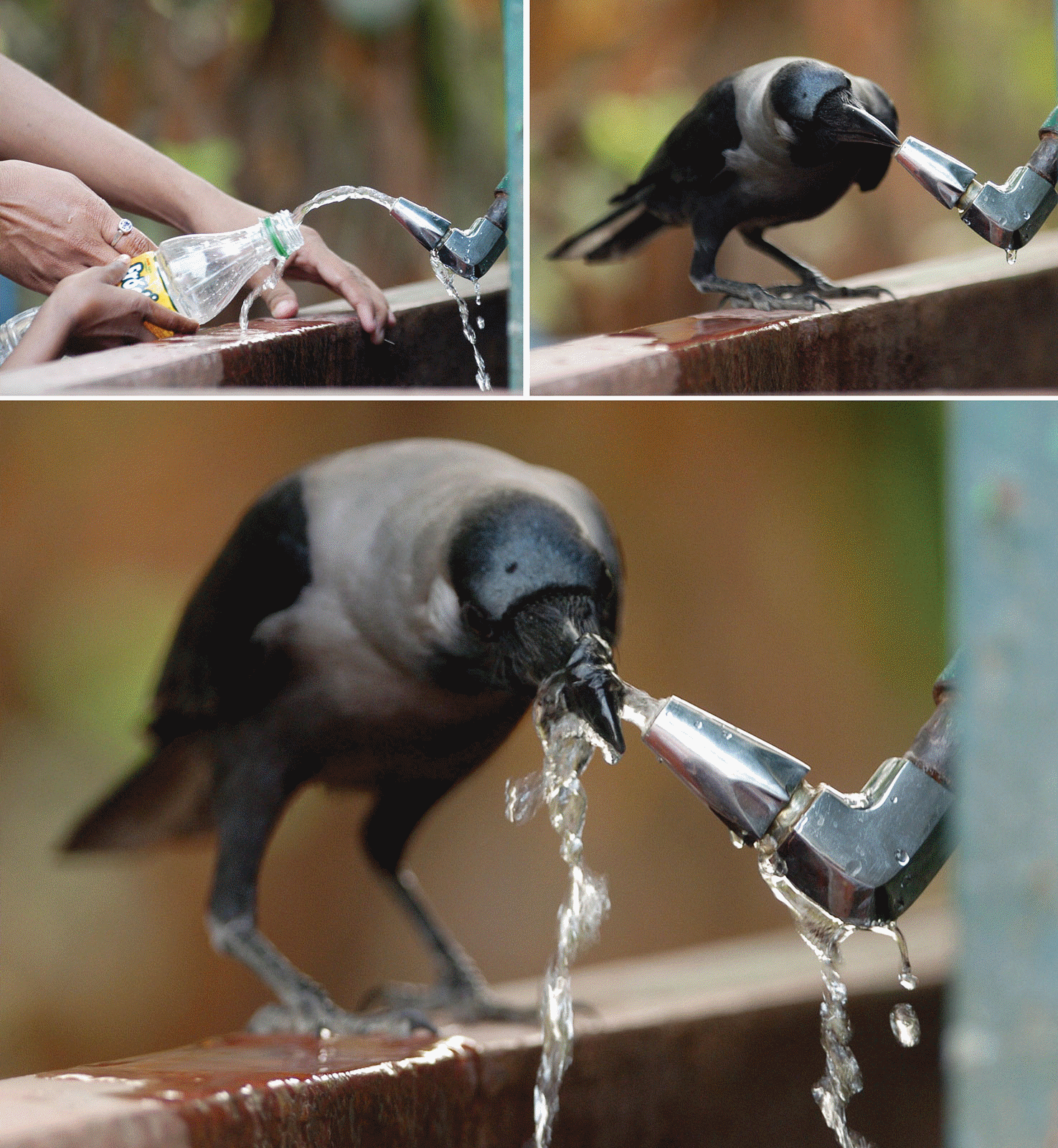 An animal learns to associate one of its own behaviors with a reward or punishment and then repeats or
avoids that behavior.
An animal learns to associate one of its own behaviors with a reward or punishment and then repeats or
avoids that behavior.
Many animals learn key information for survival. One of the most powerful ways that environmental conditions can influence behavior is through learning, the modification of behavior based on specific experiences.
Learning is a sophisticated process in which the responses of the organism are modified as a result of experience. The capacity to learn can be tied to length of life span and complexity of the brain. If the animal has a very short life span, like a fruit fly, it has no time to learn, even if it has the ability. It must therefore rely on fixed action patterns. In contrast, if the animal lives for a long time and has a complex brain, then a large part of its behavior depends on prior experience and learning.
 The Cleverness of crows
Much of the corvids(Corvidae is a cosmopolitan family of oscine passerine birds that contains the crows,
ravens, rooks, jackdaws, jays, magpies, treepies, choughs and nutcrackers) problem–solving is directed toward obtaining
food or water.
The Cleverness of crows
Much of the corvids(Corvidae is a cosmopolitan family of oscine passerine birds that contains the crows,
ravens, rooks, jackdaws, jays, magpies, treepies, choughs and nutcrackers) problem–solving is directed toward obtaining
food or water.
Different forms of learning are as follows:
Habituation : It is one of the simplest forms of learning. An animal comes to ignore a persistent stimulus so it can go about its business.
Spatial learning : Every natural environment shows some degree of spatial variation. For instance, sites suitable for nesting may be more common in some places than in others. As a consequence, the fitness of an organism may be enhanced by the capacity for spatial learning, which is the modification of behavior based on experience with the spatial structure of the environment, including the locations of nest sites, hazards, food, and prospective mates.
Cognitive maps : An animal can move around its environment in a flexible and efficient manner using landmark orientation alone. Honeybees, for instance, might learn ten or so landmarks and locate their hive and flowers in relation to those landmarks.
Associative learning : Associative learning is one type of learning in which one stimulus becomes linked to another through experience.
Cognition and Problem Solving : The study of cognition connects behavior with nervous system function. The term cognition is variously defined. In a narrow sense, it is synonymous with consciousness , or awareness. Cognition is the ability of an animal's nervous system to perceive, store, process, and use information gathered by sensory receptors. The study of animal cognition, called cognitive ethology, examines the connection between an animal's nervous system and its behavior.